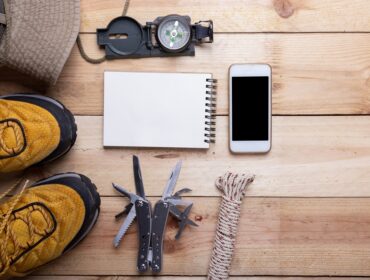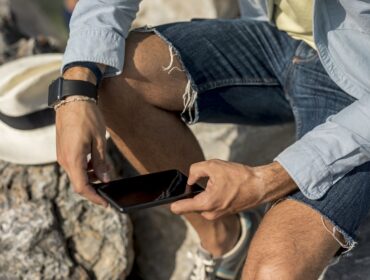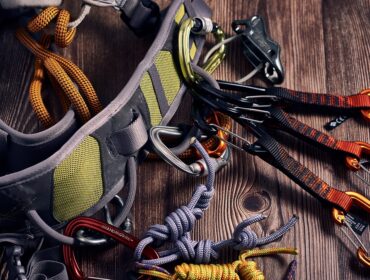Whether you’re running a forest trail, cycling through mountain passes, or doing bootcamp-style workouts in the park, tracking your outdoor workouts is key to improving your fitness, staying motivated, and reaching your goals. Unlike indoor gym sessions where machines do the tracking for you, outdoor training requires a bit more tech and strategy—but the freedom and mental boost it brings are worth the effort.
In this guide, we’ll walk you through why tracking matters, what tools you need, the best apps and devices to use, and tips to make your tracking more accurate and insightful. Whether you’re a casual jogger or a serious trail runner, you’ll find the right mix of advice and tools to optimize your outdoor performance.
Why Tracking Outdoor Workouts Matters
Before diving into gear and apps, let’s answer the “why.” Why bother tracking at all?
1. Monitor Progress Over Time
Tracking helps you measure how far you’ve come—literally and metaphorically. You can log improvements in distance, pace, elevation, and even how you felt during the workout.
2. Set and Smash Goals
Want to hike 50 miles in a month? Or shave two minutes off your 5K time? Data-backed goals are measurable and motivating. Tracking helps break your larger fitness goals into achievable steps.
3. Stay Accountable
Knowing your runs or rides are being logged keeps you honest. It builds routine and makes skipping a session harder when you’re watching a weekly chart fill in.
4. Get Personalized Insights
Advanced fitness apps and smart devices offer feedback on recovery, heart rate zones, calories burned, and more—helping you train smarter, not harder.
Essential Tools to Track Outdoor Workouts
You don’t need a lot of gear, but a few smart choices can elevate your experience. Here’s what to consider.
1. GPS Watch or Fitness Tracker
These wearable devices are the cornerstone of outdoor workout tracking. They record time, distance, pace, and routes using GPS. Advanced models add heart rate monitoring, elevation gain, and more.
Popular Choices:
-
Garmin Forerunner 265: Excellent for runners and cyclists with GPS, heart rate monitor, and VO2 max estimates.
-
Coros Pace 3: Lightweight, long battery life, and perfect for trail runners and hikers.
-
Apple Watch Series 9: Great for general fitness and health tracking with seamless iPhone integration.
2. Smartphone with Fitness App
If you’re not ready to invest in a GPS watch, your phone is a solid backup. Most modern smartphones have built-in GPS and support dozens of workout tracking apps.
Just remember: phones are bulkier and can be less accurate in dense woods or remote trails.
3. Heart Rate Monitor
Chest strap heart rate monitors are more accurate than wrist-based sensors and help optimize training intensity, especially for endurance sports like long-distance running or cycling.
Top Picks:
-
Polar H10 Heart Rate Sensor
-
Wahoo TICKR
Best Apps for Outdoor Workout Tracking
Whether you’re a minimalist who wants just time and distance or a data nerd who loves charts and metrics, there’s an app for you. Below are some of the top fitness tracking apps for outdoor workouts:
1. Strava
One of the most popular apps among runners, cyclists, and hikers.
-
Tracks distance, pace, speed, elevation, and routes
-
Social feed to share workouts and join challenges
-
Segment tracking to compete with others on specific route sections
Best For: Runners, cyclists, hikers who want social and competitive features.
2. Komoot
Designed for explorers and trail lovers.
-
Ideal for planning routes for hiking, biking, or trail running
-
Offline maps and terrain-specific details
-
Turn-by-turn voice navigation
Best For: Trail runners, mountain bikers, and adventure seekers.
3. Nike Run Club
Simple, motivational, and beginner-friendly.
-
Tracks runs, provides guided runs and motivational audio
-
Syncs with Apple Watch and other devices
-
Training plans for all levels
Best For: Casual and beginner runners.
4. AllTrails
A go-to app for outdoor hiking and trail running.
-
Provides trail maps, reviews, difficulty levels
-
Tracks your route and time on the trail
-
Offline maps with AllTrails+
Best For: Hikers and trail runners looking for new routes.
5. MapMyRun / MapMyRide
Offers route planning and detailed analytics.
-
Tracks multiple types of workouts
-
Provides real-time audio coaching
-
Syncs with Under Armour devices and shoes
Best For: Multi-sport users who value real-time feedback.
What to Track in Your Workouts
Once you’re set up with a device and app, what metrics should you focus on?
1. Distance and Duration
The most basic yet vital stats. Helps you plan training volume and progression.
2. Pace or Speed
Crucial for runners and cyclists. Monitor how fast you’re moving and adjust to stay within your target zone.
3. Heart Rate Zones
Training in the right heart rate zone ensures you’re working at the optimal intensity—whether for fat-burning, endurance, or speed.
4. Elevation Gain
Perfect for hikers, trail runners, and bikers who train on varied terrain. Helps understand the difficulty of your route.
5. Calories Burned
Useful if you’re tracking fitness for weight loss or overall health. Be aware this is an estimate that varies by device.
6. Cadence
Runners and cyclists can benefit from monitoring steps or pedal revolutions per minute to improve efficiency.
Tips to Improve Your Outdoor Workout Tracking
1. Start with a Warm-up
Your devices often take a few minutes to acquire GPS signal. Use this time to do your warm-up walk or dynamic stretches.
2. Calibrate Your Devices
Set up your stride length, weight, and age correctly in your fitness app or watch for more accurate data.
3. Keep Your Devices Charged
Outdoor workouts can drain battery faster due to GPS and tracking sensors. Always start with a full charge or carry a compact power bank.
4. Review and Reflect
After your workout, take 2–3 minutes to check your stats. See what worked, what didn’t, and how you felt. Tracking perceived effort is just as important as numbers.
5. Sync with a Fitness Platform
Link your app to Apple Health, Google Fit, or a cloud-based platform so your data is safe, organized, and available across devices.
Using Wearables to Track Recovery and Wellness
Modern fitness trackers do more than just log workouts—they also monitor your body’s readiness for the next one.
-
Sleep Monitoring: Apps like WHOOP or Oura help ensure you’re getting enough rest to support your activity levels.
-
Recovery Scores: Garmin’s Body Battery and Fitbit’s Daily Readiness Score help you decide when to push hard and when to rest.
-
Stress Tracking: Some devices track HRV (heart rate variability) to give insights into stress levels and recovery needs.
This holistic view of your training helps prevent overtraining, injury, and burnout.
Outdoor Workout Tracking for Specific Activities
Running
Track distance, pace, cadence, heart rate. Use intervals or tempo runs for variety and performance improvements.
Cycling
Use GPS for routes, elevation gain, average speed, and cadence. Many cyclists use handlebar-mounted devices for easy visibility.
Hiking
Track route, elevation, and duration. Use apps like AllTrails or Komoot for offline maps and trail details.
Kayaking & Paddleboarding
Some Garmin and Suunto watches support water-based workouts. GPS tracking in open water can be helpful for distance paddling.
Outdoor Bootcamps
Use your smartwatch to log circuit or strength workouts. Many fitness apps let you categorize custom workouts.
Final Thoughts
Tracking your outdoor workouts turns fitness into a journey you can see, measure, and celebrate. From boosting motivation to fine-tuning performance, the right tools help you get the most out of your outdoor time. You don’t need the most expensive gear—just the discipline to track, reflect, and keep going.
Whether you’re hitting the trail, road, or lake, every session brings you closer to your fitness goals. So lace up, charge your tracker, and let the outdoors be your gym—and your data guide your success.
FAQs: Track Your Outdoor Workouts
What’s the best app for tracking outdoor workouts?
Strava is a top pick for runners and cyclists due to its GPS tracking, social features, and performance data.
Can I track my workout without internet?
Yes, most fitness watches and apps like Komoot and AllTrails support offline tracking once GPS is acquired.
How accurate are smartphone-based trackers?
Generally accurate in open spaces, but signal can be weaker in forests, mountains, or urban areas. Wearable GPS devices are more precise.
Do I need a smartwatch to track outdoor workouts?
Not necessarily. Your smartphone with a good app is enough for basic tracking. However, watches offer more convenience and accuracy.
How can I make sure my data is safe and backed up?
Always sync your app with a cloud service or health platform (Google Fit, Apple Health, Garmin Connect) to keep your data secure.





